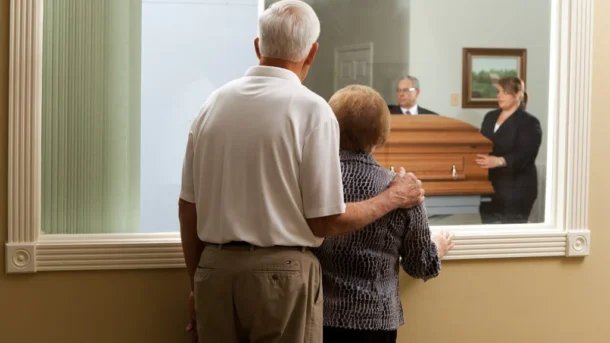In recent years, cremation has become an increasingly popular choice for end-of-life arrangements. This shift is attributed to various factors, including environmental concerns, flexibility in memorialization, and cost considerations. Understanding the options and costs associated with funeral home cremation packages is essential for making informed decisions during a challenging time. This guide provides a detailed, clear overview of cremation management to support you during this time.

I. What Is the Basic Cremation Process?
Cremation is not an isolated step but part of funeral services. Its standard process usually includes the following stages:
1. Obtain the Death Certificate
This is the key document to start all subsequent procedures. You need to apply for the Resident Death Medical Certificate (Inference) at the hospital where the deceased passed away or the local police station in their registered residence area.
2. Contact a Funeral Home
With the death certificate, call the funeral home’s service hotline or visit in person to book services such as hearse transportation, body refrigeration, and the cremation time. It is recommended to choose a formal, qualified funeral home.
3. Body Transportation and Refrigeration
The funeral home will send a hearse to transport the deceased’s body to the facility. The body will then be placed in a refrigerated cabinet for preservation, if needed.
4. Discuss Funeral Details and Complete Formalities
Family members go to the funeral home’s service hall to confirm service items with staff. These typically include:
- Cremation furnace selection: There are usually standard furnaces and premium “ash-retrieval” furnaces (which allow for more complete collection of ashes). The latter costs more.
- Urn purchase: Prices vary mainly based on the material and craftsmanship of the urn.
- Additional services: Such as a farewell ceremony, body preparation (e.g., grooming, dressing), etc.
5. Farewell Ceremony and Cremation
After a simple farewell ceremony at the scheduled time, the body is taken to the cremation room for the process. Family members usually wait outside during this time.
6. Collect the Ashes
Once cremation is complete, staff will guide family members to collect the ashes and place them in the purchased urn.
7. Ashes Placement
Families can choose to temporarily store the ashes at the funeral home or bury them directly in a legal cemetery.
II. Detailed Cremation Costs: How to Stay Informed?
Cremation costs vary significantly by region, service items, and personal choices. They mainly include three parts:
1. Basic Cremation Fees
These are fixed charges from the funeral home, covering hearse transportation, the cremation process itself, and temporary ash storage. This forms the base cost of the service.
2. Optional Service Fees
These include extra services like body grooming, rental of a farewell hall, coffin rental, and ceremonial services. You can choose these based on your family’s needs and budget.
3. Cremation Furnace and Urn Costs
- Furnace type: Premium ash-retrieval furnaces usually cost 1.5 to 2 times more than standard furnaces.
- Urn: Prices range from a few hundred yuan for wooden urns to tens of thousands of yuan for jade or metal ones. It is recommended to choose based on your actual financial capacity and avoid unnecessary comparisons.
Money-Saving Tip: Learn about local government’s funeral subsidy policies in advance (e.g., waivers for basic funeral services). Eligible families can reduce some expenses through these policies.
III. Key Considerations: These Details Matter
1. Prepare All Required Documents
Be sure to bring the deceased’s ID card, household registration book, the handler’s ID card, and the Death Certificate.
2. Choose Accompanying Family Members
It is advisable to have immediate family members who are relatively calm and in good health handle the procedures. Having 2-3 people together helps with discussions and decision-making.
3. Consume Rationally and Avoid Forced Bundles
Stay clear-minded at the funeral home. Choose services based on your pre-planned needs, and be wary of unnecessary bundled services or excessive promotion from staff.
4. Respect the Deceased’s Wishes
If the elderly had a clear will about their funeral (e.g., eco-burial, simple arrangements), do your best to follow it. This is the best comfort to their memory.
5. Attend to Emotional Needs
The cremation process is an intense emotional test for families. Support and comfort each other, and do not suppress grief excessively.
Conclusion
Handling the cremation of an elderly loved one is a responsibility that the living must fulfill. By understanding relevant information in advance and staying prepared, you can make the entire process smoother. This also allows you to focus more on remembering and honoring the deceased amid your sorrow. May this guide provide practical help and comfort when you need it most.
Related article:Elderly Care: How to Safeguard Health and Dignity in Later Life



